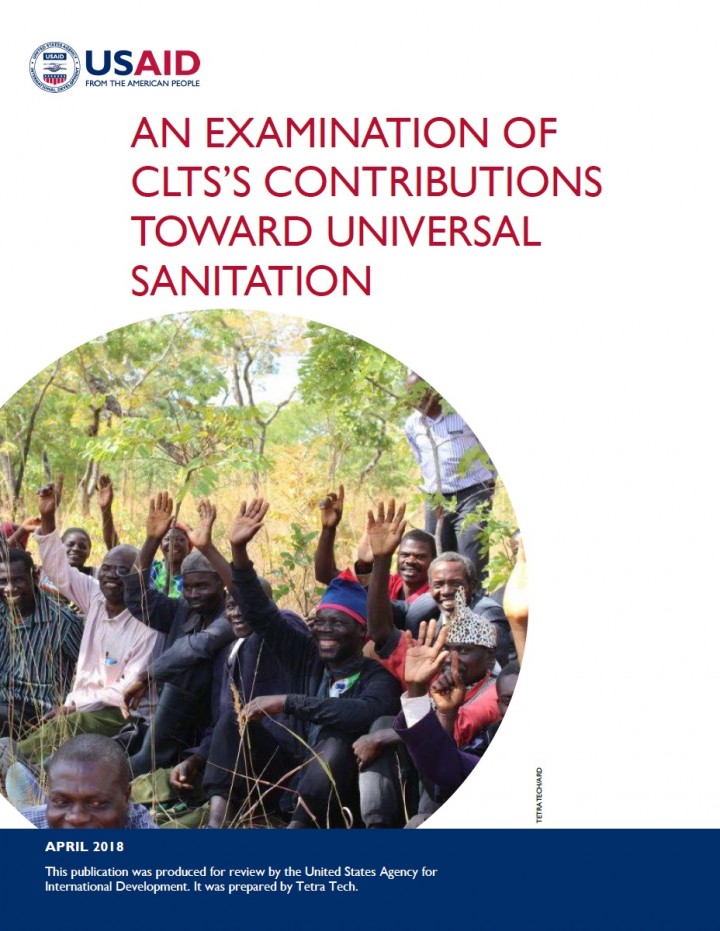An Examination of CLTS’s Contributions Toward Universal Sanitation USAID (2018)
Community-led Total Sanitation (CLTS) is a revolutionary idea and an inspiring practice. The enthusiasm of its many adherents in government and civil society is understandable. This desk review examines the refereed and gray literature on CLTS, with the central objective of assessing the knowledge base on best practices and identifying evidence gaps to inform the project’s research agenda (to generate findings that improve policy and practice).
The review offers a description of the CLTS intervention, tracing its evolution in theory and practice from Southeast Asia to its current place as a global phenomenon. It explores the open defecation free (ODF) concept (including varying definitions from country to country) and analyzes its strengths and weaknesses. It also highlights the disconnect between the independent monitoring and analysis of CLTS program results on the one hand and internal performance reports released by implementing organizations or their donors on the other. In compiling this information, we considered the challenges of measuring open defecation and suggest potential solutions that may lie in the more straightforward measure of private latrine ownership.
This review also seeks to assess (1) circumstances in which CLTS works best, (2) the most promising implementation modalities, and (3) instances where CLTS may not be suitable. CLTS should not be judged as a stand-alone intervention, but rather as a powerful option among an array of sanitation interventions whose limitations in selected circumstances must be recognized to best adapt it to diverse contexts and optimize its integration with other measures.
Bibliographic information
USAID (2018). An Examination of CLTS’s Contributions Toward Universal Sanitation USAID
Filter / Tags
English
Downloads
An Examination of CLTS’s Contributions Toward Universal Sanitation
Type: application/pdf
Size: 1.76 MB

